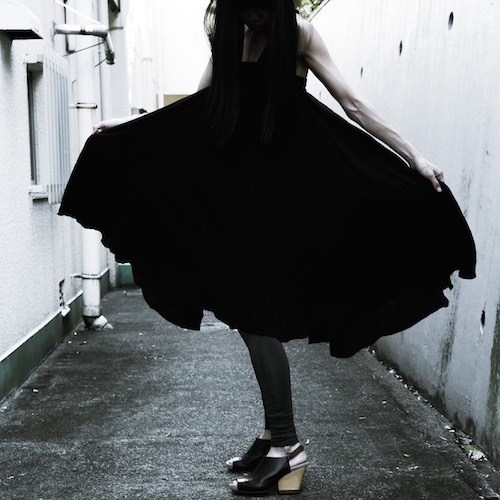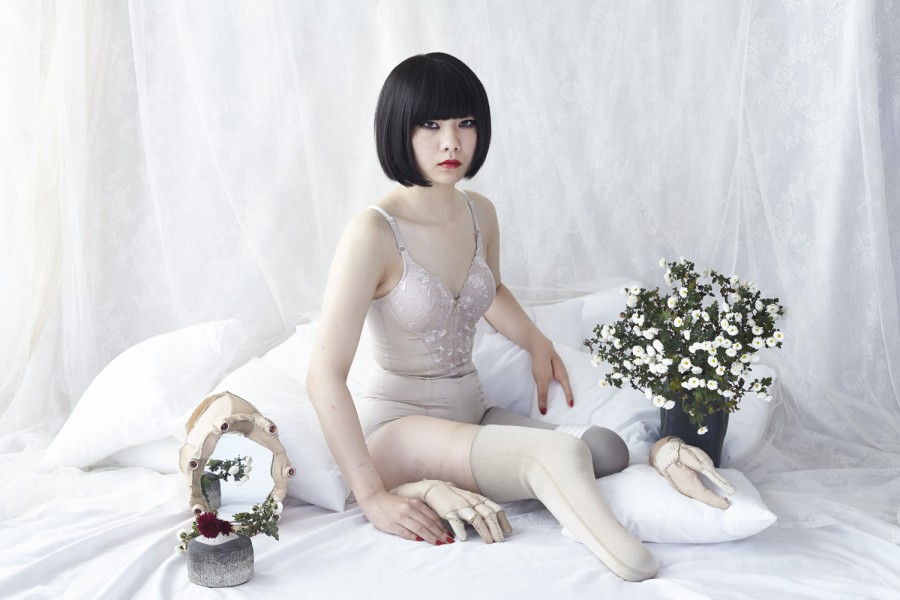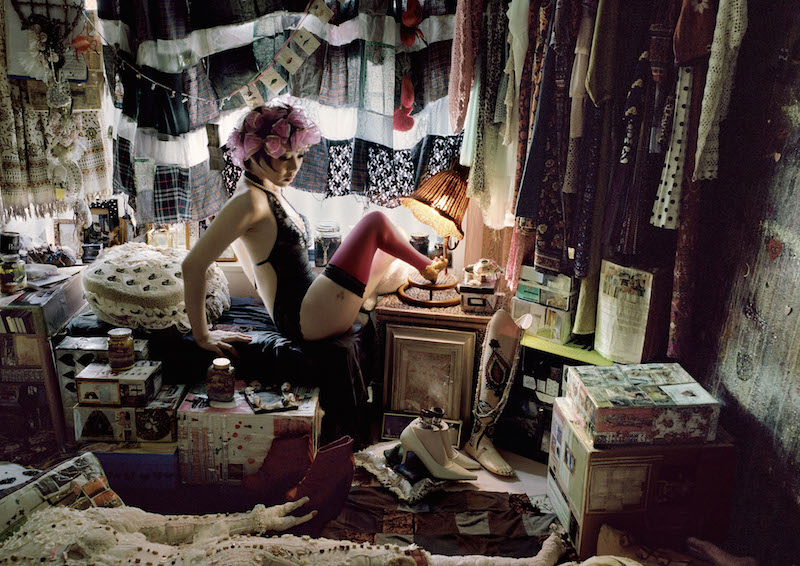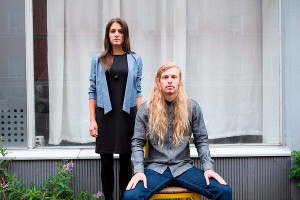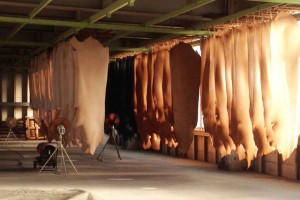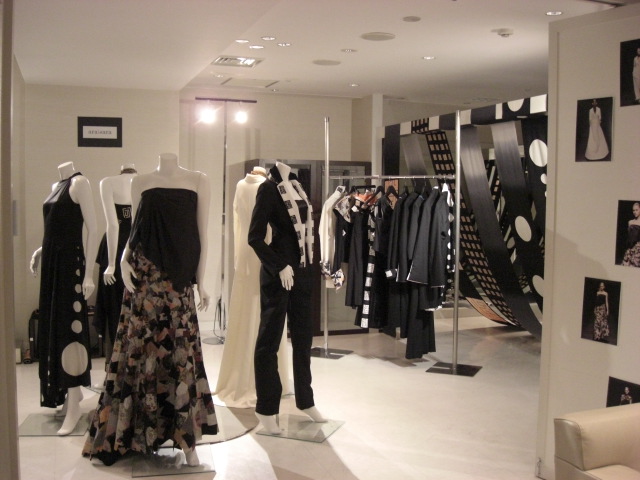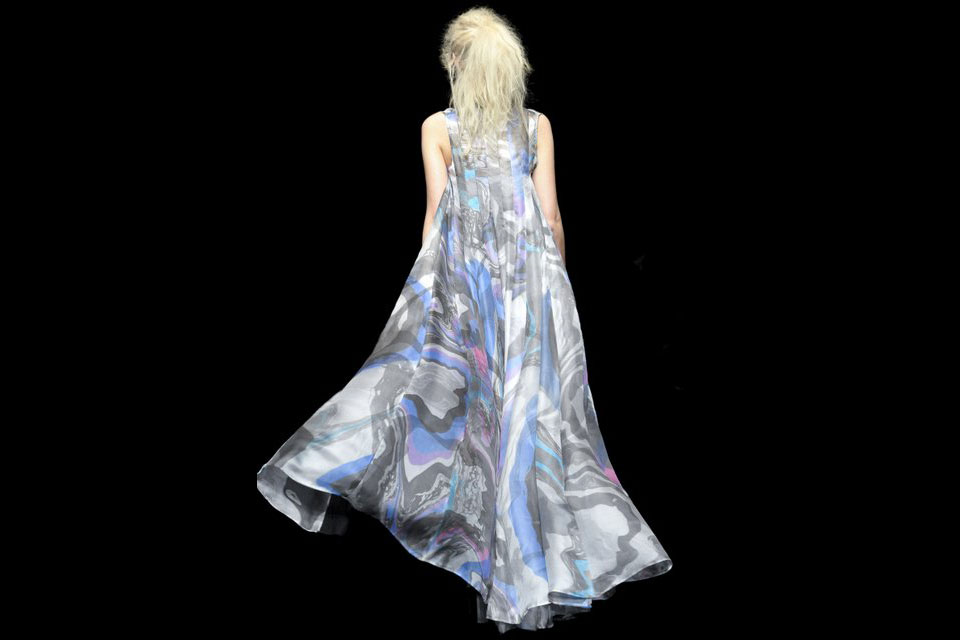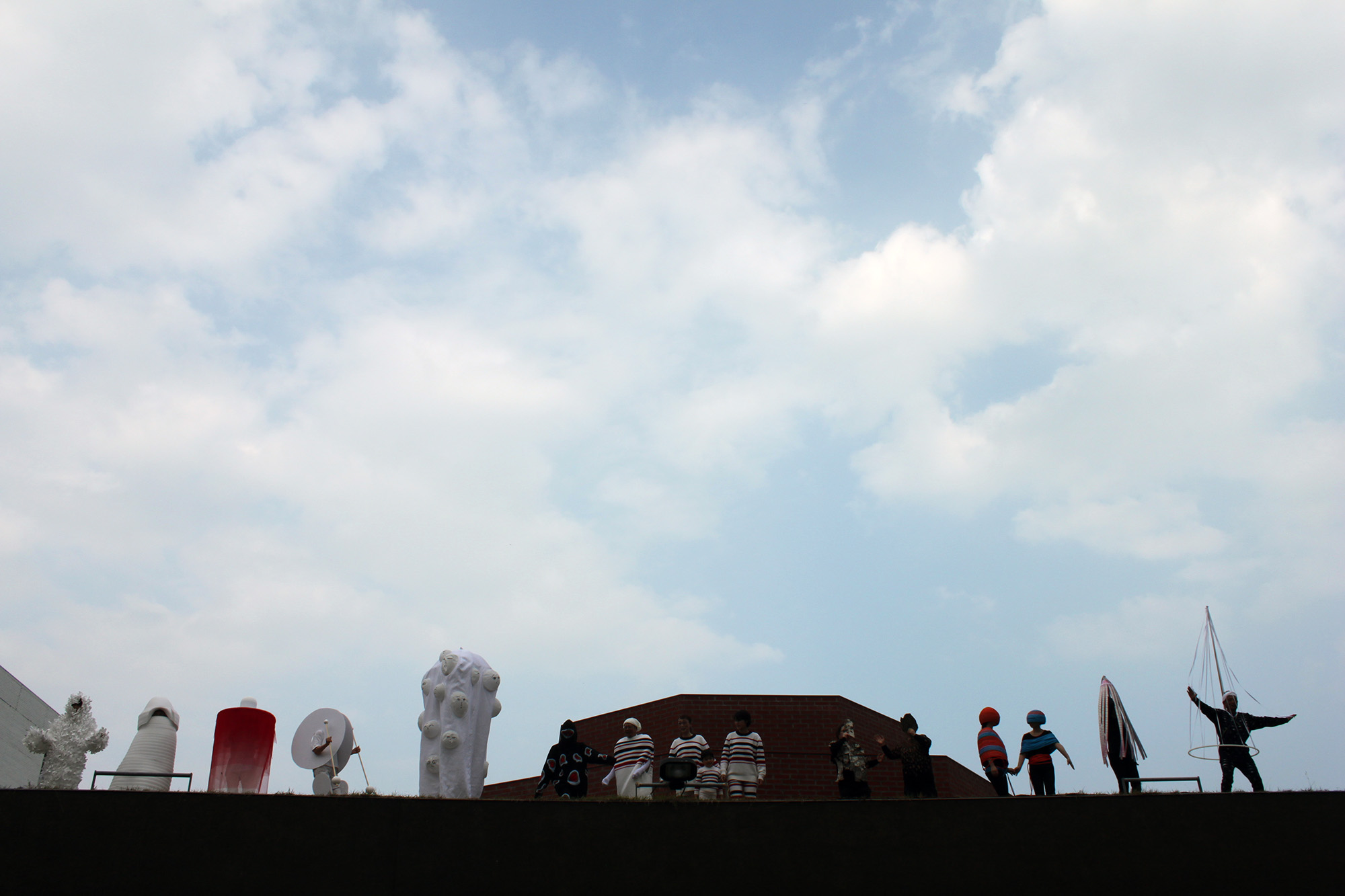Designer Sara Arai started her prêt-a-porter line araisara in 2008, to express the connection between traditional oriental culture and fashion. Arai shows her collection at JFW since 2009-10A/W. She has been invited from several countries as Russia, India and Malaysia for express her fashion show abroad. She has joined Paris fashion week on schedule from 2013.S/S. to present Asian culture to the world from Japan.
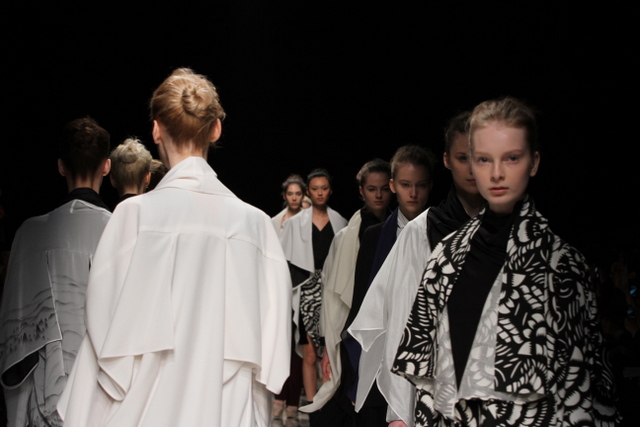
araisara2012AW Collection “Yang Guifei”
Next Step, to Paris
March 22, 2012 : I have completed my last runway show at Japan Fashion Week. For this collection, I presented all the styles that were possible with one type of garment called “tsukumo-shiki,” a manteau-type jacket, with the aim of showing the many possibilities that one garment could hold. For the next season, araisara will present its newest collection in Paris. I decided to move the presentation to Paris to present the beauty of Asian traditional techniques to more people around the world.
There were many reasons why I decided to present my show with one type of garment. I strongly believe that audience in Paris will also comprehend the beauty of Asian traditional techniques, because clothes hold unimaginable power. It was my clients who made me believe in the power of clothes. Let me introduce two episodes that demonstrate this:
Islamic Fashion Week
In November 2011, I was invited to do a runway show at Islamic Fashion Week in Malaysia. Invited designers were only Kenzo and me; all the others were from other Asian countries, such as Taiwan and Malaysia. There are so many differences between Japan and Malaysia, starting with language, culture, and especially religion. Due to the country’s Islamic rules, the women face restrictions with regards to fashion. Therefore, I was at first not sure whether they would be receptive to my clothes and whether the clothes would match their taste. Although I was unsure of many things, I believed in chance and decided to try.
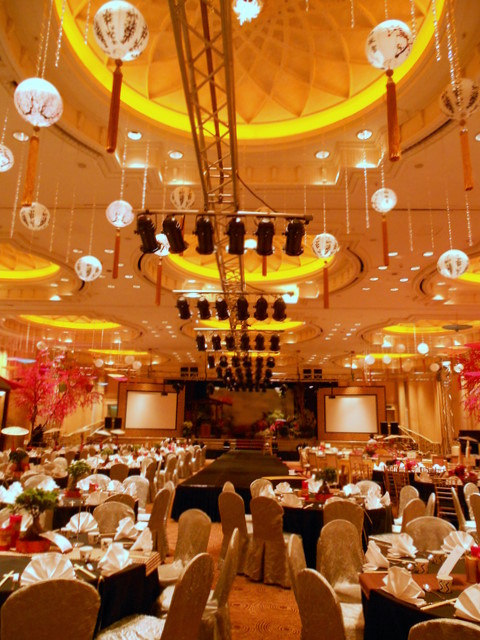
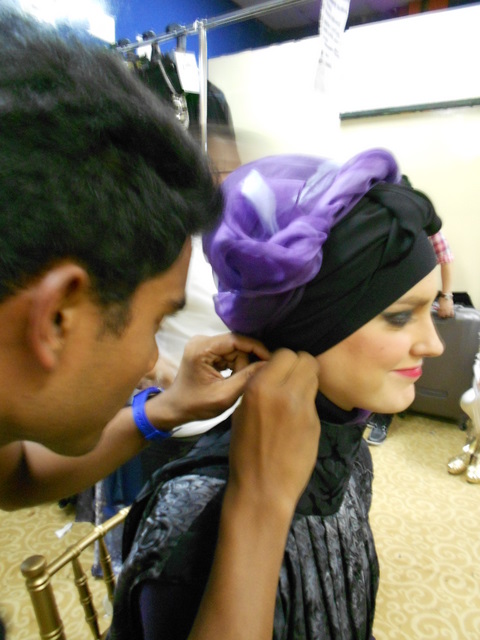
The runway show was in a dinner and floor-show style. The setting was beautiful, and many Malaysian super VIPs were invited.
As soon as the show started and the models came out on the runway, all the guests gathered around the runway, although they were still having their dinner. After the show, they came up to me with a smile. I noticed the difference in their smiles before and after the show.
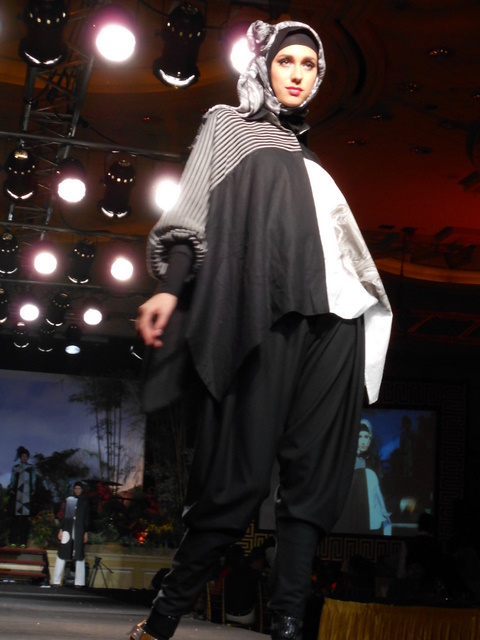
araisara in Islamic Fashion Week
As they tried my clothes on, they complimented “I can feel the time flows with this” and “I love them even more when I put them on.” One person even asked, “Is this a design done with water? I feel like I’m protected by water.” As I watched the guests enjoying my clothes, I realized that I had succeeded in conveying the beauty and the charms of Japanese traditional techniques and conveying the message of Japanese traditional artisans. In addition, my clothes matched the traditional clothes they wore very well.
I became more confident, believing that the charms of fashion/clothes could overcome language, religious, and cultural barriers. Even more, fashion/clothes could be a communicator, not just an economic tool for buying and selling, but a means to exchange ideas and feelings with people with completely different cultural backgrounds and to tie people overseas together.
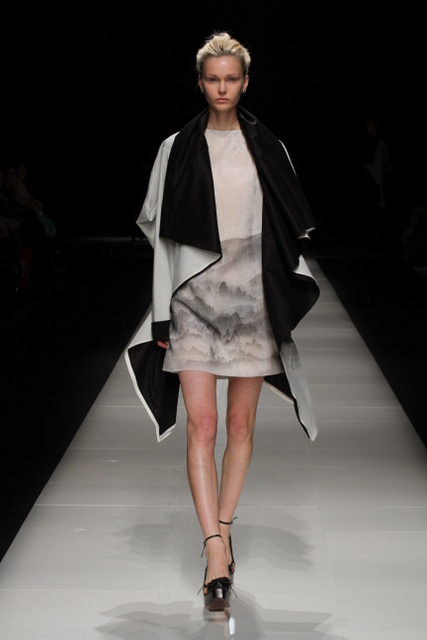
Potpourri de Tobacco
The second story is from my salon. At my atelier salon, I reform unused old kimonos and fabrics into new designs so that they can be used daily once again. Many people bring in stories with their kimonos. For example, the kimono may have been worn by the person’s deceased mother or have been purchased with the person’s first salary (the first salary has a major meaning in Japan, where it signals becoming independent and economically mature). People come in with things that they have been unable to throw away for a long time because they had a story.
It has been eight years since I opened my salon. I don’t have a reservation system, so I don’t know who will arrive on any particular day. Maybe no one comes. Although there may be no one coming, every day I open the salon, clean the window, prepare tea, and change the displays. Every day is a routine. Doing the routine carefully every day—this is what I’m not good at. I have continued doing this for eight years . Why? It’s because of the customers who bring many different stories. Depending on the customers, I work on different stories, and this makes every day completely different.
For example, I have a lady customer who has already moved out of Tokyo, but she always comes twice a year to purchase my clothes. We first met when she came to my shop. She told me that she wanted to reform an old kimono into a coat so that she could wear it daily. I said of course, and the next day, she brought in a purplish man’s ohshima-tsumugi kimono (a traditional plain weaving kimono made in the Amami-Islands using silk).
Maybe it had been used for a long time, and the red color had mixed with the dark blue and changed to deep purple. It was very large, but also very soft and supple. When she put it on, because she was tall and stylish, it fit her very well. We decided to make it into a long shirt-style jacket.
As I was styling and carefully cutting it apart, all of a sudden there was a lovely fragrant smell of tobacco leaves. When I took a closer look, I found piles of tobacco leaves in the pocket of the sleeves. When I smelt the leaves, I instantly imagined how the former owner looked wearing this. He must have been right-handed, and he must have put his tobacco pipe here. As the leaves still had a nice strong smell, I collected them and wrapped them into a transparent fabric and made a potpourri.
On the day of the final delivery, I gave the finished coat with the potpourri to the customer. As soon as she saw the potpourri and smelt the leaves, tears flooded her eyes and she said, “Look how he’s smoking again!” Then she told me more stories about the kimono. It was her father who formerly wore the kimono. He had passed away ten years ago, and he wore the kimono on days that were important. Her father was forbidden to smoke, but he could not resist. He always hid from the family and smoked. My customer took custody of the kimono as a remembrance after his death. After telling the stories, she told me that she was able to feel the warmth of her father again by reforming the kimono.
Clothes for Stories
At the salon, I hear stories like this every day. Every story is different. The story is passed on from person to person as the kimono is passed on to the next individual to wear it. The clothes tell the story and tie the people together. When you create clothes with a strong feeling, people will wear them with passion also. They will then carry the owners’ memories and generate new stories. Depending on the memories, the clothes change into something very original and unique.
A garment is not just for buying and selling. It can tie people together and overcome cultural differences and time gaps. I am now preparing for the Paris collection, and I am looking forward to how people there will take the message from my clothes. It will surely generate another unique story, depending on how each person takes the message.
TSUKUMO-SHIKI
The tsukumo-shiki is a representative work by araisara. It can be worn in numerous styles, such as a jacket, shirt, pants, or skirt, depending on how the wearer comprehends the style. In Kanji, tsukumo means the number “99.” It is used as a symbol of the diversity and unimaginable possibilities. It presents to make the person wearing the last “1” piece to perfect the style.

